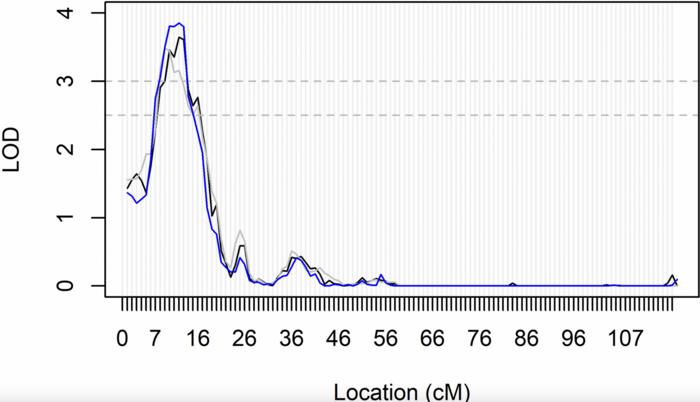
A recent study published in the journal Aging has unveiled fascinating insights into the genetic determinants of peripheral artery disease (PAD) as well as the impact of familial longevity on vascular health. This research, spearheaded by Deidra R. Fricke and a dedicated team from the University of Pittsburgh and various collaborating institutions, focused on examining how both genetic factors and lifestyle choices contribute to the prevalence of PAD among long-lived families. By analyzing comprehensive data from the Long Life Family Study, the researchers have unveiled a compelling narrative about the protective factors that may shield these families from this serious vascular condition.
Peripheral artery disease is a vascular disorder characterized by the narrowing of arteries, primarily affecting blood flow to the limbs. It is a condition often underdiagnosed, and, despite its prevalence, many individuals remain unaware of their susceptibility. Typically, PAD can lead to severe complications, including cardiovascular incidents such as heart attacks or strokes, as well as complications related to mobility. Importantly, the research highlights the role that familial lineage plays in potentially mitigating these risks, particularly among those individuals with exceptionally long lifespans. Through their findings, the researchers aim to unravel the intricate relationships between genes and environmental factors in influencing vascular health.
The study involved an extensive participant pool of over 3,000 individuals, which notably included 1,090 centenarians and their immediate family members. Among the oldest subjects, the findings revealed that approximately 18 percent were diagnosed with PAD, a statistic that is alarmingly lower among their children, with just one percent showing signs of the disease. This significant disparity indicates a protective paradigm at play within these families, suggesting that genetic predispositions and health-conscious lifestyle choices may together offer a shield against developing PAD.
This research pursued a multifaceted analysis of various risk factors associated with PAD. The researchers identified age, hypertension, smoking, and the use of antihypertensive medications as contributing factors. Interestingly, this study’s data deviated from other contemporary research, which more prominently associates high cholesterol levels and diabetes with the risk of developing PAD. The absence of these traditional risk factors within this specific population further accentuates the notion that unique genetic markers might afford these families a level of protection not seen in the wider community.
Linked to this, the researchers pinpointed four distinct genomic regions that could play a crucial role in defining an individual’s risk for PAD. Of these, three regions were novel findings, while the fourth echoed previously identified markers, albeit with variations. These genetic insights illuminate a promising avenue for further scientific inquiry. The identification of these specific genomic loci offers a tangible pathway toward understanding not just the mechanics of PAD, but also how certain genetic variations can underlie a more robust arterial health profile.
Understanding the unique attributes of long-lived families can yield critical insights into effective aging strategies. With recent advancements in genomic methodologies, there’s the profound potential for developing interventions that could preemptively address PAD risk. This study serves to reinforce the idea that early genomic screening could facilitate personalized health strategies that are rooted in genetic predispositions. Scientific communities may soon look to leverage these discoveries as a basis for crafting novel therapeutic approaches that specifically target PAD risk, offering revolutionary implications for public health.
The implications of this research extend beyond academic realms into practical applications within clinical settings. As cardiovascular diseases continue to represent a leading cause of mortality in older populations, understanding these genetic factors could be pivotal in developing preventative measures. By focusing on genetic susceptibility and family health history, healthcare providers might harness this knowledge to create tailored interventions, informing patients on lifestyle modifications and potential screening processes that resonate with their familial health patterns.
In essence, this groundbreaking work underscores the necessity of a holistic approach to health that encapsulates not only genetic factors but lifestyle choices that significantly influence health outcomes. The researchers emphasized that continuous investigation into how all these facets intersect will be integral in developing targeted health interventions. Ultimately, such knowledge could empower individuals with the tools needed to make informed health decisions throughout their lives.
Moreover, the publication in the high-impact journal Aging speaks to the escalating recognition of the importance of aging research in addressing contemporary health challenges. It highlights the intersection of genetic research and clinical practice, and with aging populations on the rise, studies like these become increasingly vital. The beneficial inquiries into familial structures not only broaden our understanding of individual health determinants but also enhance public health strategies intended for aging communities, ensuring a brighter, healthier future for older adults globally.
In conclusion, the research undertaken by Fricke et al. represents a paradigm shift in understanding the complexities of PAD, with a focus on familial longevity as a critical influencer. The implications derived from these findings hold promise for future studies and interventions aimed at alleviating the burden of vascular diseases in aging populations. This remarkable intersection of genetics and lifestyle lays the groundwork for not only understanding PAD but advancing vascular health as a cornerstone of healthy aging.
Subject of Research: Peripheral Artery Disease and Familial Longevity
Article Title: Epidemiology and genetic determination of measures of peripheral vascular health in the Long Life Family Study
News Publication Date: March 12, 2025
Web References: https://www.aging-us.com/
References: Not Applicable
Image Credits: Copyright: © 2025 Fricke et al.
Keywords: aging, peripheral arterial disease, genetics, cardiovascular health, familial longevity, genomic analysis, risk factors, long-lived families, vascular health.
Tags: aging and vascular disease relationshipscardiovascular health in long-lived individualscomprehensive data analysis in health studiesfamilial longevity and PAD riskgenetic determinants of vascular healthimplications of PAD on mobilitylifestyle choices affecting peripheral artery diseaselong-lived families and peripheral artery diseaseprevalence of peripheral artery disease in familiesprotective factors against vascular disordersunderdiagnosed vascular conditionsUniversity of Pittsburgh PAD research






